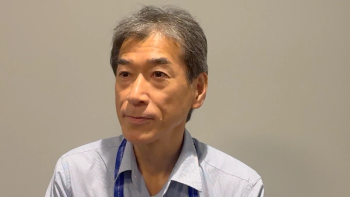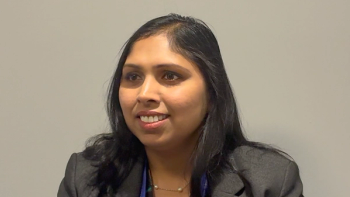
Gene-Mediated Cytotoxic Immunotherapy Improves Survival in Newly Diagnosed Glioma
Adding adjuvant gene-mediated cytotoxic immunotherapy using aglatimagene besadenovec and valacyclovir to standard of care improves survival among patients undergoing surgery for newly diagnosed malignant glioma.
Adding adjuvant gene-mediated cytotoxic immunotherapy (GMCI) using aglatimagene besadenovec (AdV-tk) and valacyclovir to standard of care (SOC) improves survival among patients undergoing surgery for newly diagnosed malignant glioma-particularly among patients undergoing gross total resection, according to findings from a phase II multicenter study reported at the 20th Annual Scientific Meeting of the Society for Neuro-Oncology, held November 19-22 in San Antonio, Texas.
“GMCI can be safely combined with SOC in newly diagnosed malignant gliomas,” reported lead study author E. Antonio Chiocca, MD, PhD, surgical director at the Center for Neuro-Oncology at the Dana-Farber Cancer Institute, and chairman of Neurosurgery at Brigham and Women’s Hospital in Boston. “Survival rates compared favorably to historical reports and a matched control group. Survival outcomes were significantly improved in patients with minimal residual disease after total resection.”
“This is the first study to demonstrate a correlation between maximum debulking and a survival advantage using immunotherapy,” he noted.
GMCI generates an antitumor immune system response through local delivery of an adenoviral vector expressing the herpes simplex virus (HSV)-tk gene (AdV-tk) during surgery, followed by the orally administered antiherpetic prodrug valacyclovir.
The phase II trial assessed overall survival (OS) associated with SOC plus GMCI, compared to a matched-control group receiving only SOC. “From 2006 to 2010, 48 patients completed SOC plus GMCI and 134 patients were matched from the SOC-only cohort,” Dr. Chiocca reported. “There were no dose-limiting toxicities. Fever, fatigue, and headache were the most common GMCI-related symptoms.”
Median OS was 17.1 months for SOC plus GMCI patients and 13.5 months for the SOC-only control group, he reported (hazard ratio, 0.72 [95% confidence interval, 0.52-0.99]; P = .0417), a 27% relative improvement. “OS at 1-, 2-, and 3-years increased from 57%, 22%, and 8% to 67%, 35%, and 19%, respectively,” he reported. Improvement was mostly seen in patients that underwent gross total resection: median OS increased from 16.9 in the SOC-only group to 25 months in the SOC plus GMCI group (P = .049).
Progression-free survival saw a similar 25% relative improvement with the addition of GMCI to SOC: 8.1 vs 6.5 months (P = .010).
“These data strongly support further evaluation of GMCI for malignant gliomas,” Dr. Chiocca concluded.
Newsletter
Stay up to date on recent advances in the multidisciplinary approach to cancer.


![According to John Henson, MD, “What we need are better treatments to control the [brain] tumor once it’s detected.”](https://cdn.sanity.io/images/0vv8moc6/cancernetwork/e0d29c38bb732429ae370e4ef7d1829a10c96446-2992x1684.png?w=350&fit=crop&auto=format)















































































